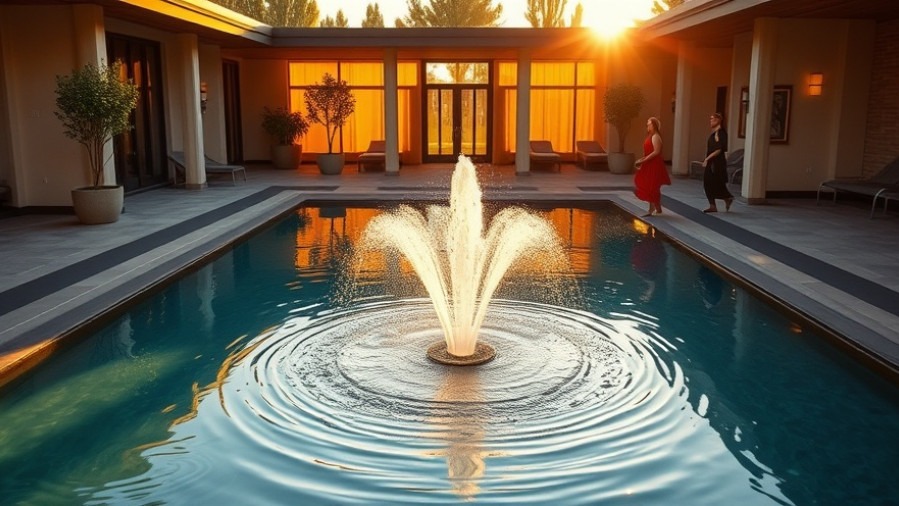
Rethinking Leadership in the Spa & Wellness Sector
Why the next generation of spa leaders are learning to let go, slow down, and lead with curiosity.
The scent of eucalyptus hangs in the air, the playlist hums in perfect harmony, and a sense of calm fills your lobby.
But if you’re a spa leader, you know what’s happening behind that serenity: juggling schedules, managing personalities, tracking numbers, and somehow staying inspired enough to keep the energy flowing for everyone else.
That’s the paradox of spa leadership—trying to run a sanctuary while living in the storm.
And yet, the leaders who thrive today aren’t the ones pushing harder or speaking louder. They’re the ones learning to pause, to listen, and to flip long-held beliefs about what leadership should look like.
In this new landscape, three major reversals are changing everything.

1. The Power of Not Knowing
For years, authority in the spa world came from expertise. You were expected to have the answers: the right product line, the ideal treatment mix, the most efficient scheduling formula.
But something unexpected happened—staff started craving collaboration more than certainty. Guests wanted authenticity more than perfection. Suddenly, “knowing it all” became less powerful than being willing to ask.
“When you listen to the guests and staff firsthand, you get a totally different perspective of the operation.”
— Spa Executive Magazine, “Behaviors of Successful Leaders in Spa and Wellness”
Curiosity is the new expertise. The best leaders ask, What am I missing? or How could we do this better together?
Those questions open doors that answers can’t.
Sometimes, it’s as simple as letting your estheticians experiment with a new product demo or inviting your massage team to brainstorm a “post-treatment ritual” guests can take home. You don’t have to orchestrate every note—just create the stage where good ideas can perform.
And when you lead that way, you’re no longer the smartest person in the room. You’re the most open.

2. Strategic Surrender (and Why It Isn’t Weakness)
There’s a quiet bravery in letting go.
Many spa owners try to control every detail—menus, training manuals, playlist volume. But control is a double-edged sword. Hold it too tightly, and creativity can’t breathe.
“Regardless of how stunning the spa design or how opulent the setting, the team you have in place will make the biggest difference to your clients’ experiences.”
— Paula Perkins, Global Spa Consultant
Paula Perkins has spent decades helping luxury spas refine their culture. Her advice sounds deceptively simple: trust your people.
That doesn’t mean abandoning standards—it means defining the vision, then giving others the space to bring it to life.
Maybe your lead therapist develops an onboarding process for new hires. Maybe your concierge team decides how to personalize birthday experiences. These micro-moments of ownership build pride, not chaos.
“Change can be uncomfortable for everyone,” Perkins says, “but once the direction is clear, communication turns that discomfort into momentum.”
So, no—it’s not surrender. It’s smart delegation with heart. And it might be the single most important wellness practice you model for your staff.

3. The Virtue of Slowing Down
It sounds ironic that leaders in a wellness industry struggle most with slowing down. But it’s true. We move fast, we react fast, we chase trends—because the market never stops.
Yet in all that speed, something human gets lost.
“Great spa and wellness leaders listen to their team members and respond to needs and wants. They listen to their guests and to what’s happening in the sector.”
— Spa Executive Magazine
Reflection is the missing ingredient. The leaders who pause—who take time to feel what’s working and what isn’t—make more grounded, lasting decisions.
Some schedule “quiet hours” in their week—no meetings, no emails, just thinking. Others begin each day by asking their managers one question: What do we need less of this week?
Those few moments of stillness do more than calm the mind. They reveal the path forward.
“At this year’s World Spa & Wellness Convention, experts spoke of vulnerability, longevity, and the courage to slow leadership down,” noted European Spa Magazine.
Because slowing down doesn’t mean stalling—it means steering with intention.
4. Breaking the Myths
Old assumptions die hard.
Many spa owners still fear that loosening control equals chaos. In truth, it does the opposite. When people feel trusted, they rise to the occasion.
Another myth? That pausing slows growth. Ask any thriving wellness leader, and they’ll tell you: quick decisions make you efficient, but thoughtful decisions make you enduring.
And then there’s the big one—admitting you don’t have all the answers.
In practice, it’s the most magnetic thing you can do. Vulnerability draws people closer. It invites creativity, honesty, and collaboration—the qualities every spa needs to flourish.

5. Tools That Turn Philosophy Into Practice
A new mindset is only powerful if it shows up in daily action. Here are ways to translate these leadership reversals into habit:
Create an anonymous “ideas box.” It can be digital or literal, but make it safe. Ask for one suggestion per week from your staff.
Host five-minute debriefs. Not meetings—moments. Ask: “What went beautifully today?” and “What could we do smoother next time?”
Set emotional metrics. Track how staff feel, not just what they do.
Pause with purpose. Schedule short reflection breaks between back-to-back client hours. You’ll make better calls.
Delegate with direction. Define the “why” of the task, not every step. Freedom fuels innovation.
These small acts are like wellness rituals for your business: consistent, mindful, transformative.

6. Why This Matters Now
The Global Wellness Institute predicts the wellness economy will surpass $8.5 trillion by 2027. With that kind of expansion, the competition for both clients and qualified therapists will only intensify.
The leaders who succeed won’t be the ones shouting the loudest. They’ll be the ones creating the calmest space—for staff, for guests, and for themselves.
Because ultimately, leadership in this industry isn’t about management at all. It’s about embodiment. Living the same balance and awareness we encourage our clients to find.
The Takeaway
The next evolution of leadership doesn’t require a new title or training—it requires a shift in how you show up.
Ask more than you answer. Trust more than you direct. Pause more than you rush.
These aren’t signs of uncertainty; they’re marks of confidence.
Lead like the wellness industry you represent—rooted, reflective, and alive. Because when your leadership feels well, everything else follows.
Learn more about team culture, management strategies, and business growth in the Leadership & Growth category, or head back to Spa Front News for broader coverage on spa trends, innovation, and industry intelligence.
—
Authored by the Spa Front News Editorial Team — a publication of DSA Digital Media, dedicated to elevating the spa industry with expert insights, treatment breakthroughs, and destination features for spa owners, managers, and wellness leaders.
 Add Row
Add Row  Add
Add 




Write A Comment